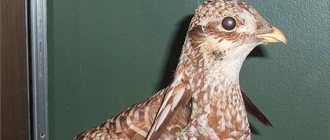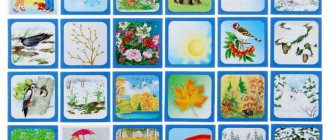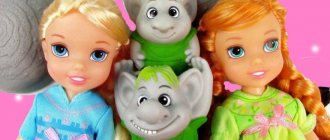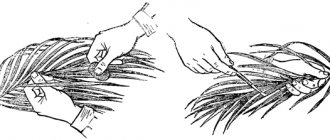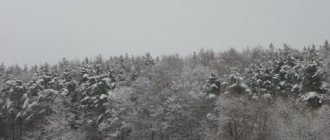Event “Gallery of the Red Book”
Children's answers
: …
Presenter's answer
: Right. (slide) The Red Book is the main document that summarizes materials on the current state of rare and endangered species of plants and animals, on the basis of which scientific and practical measures are developed aimed at their protection, reproduction and rational use.
The Red Book includes species of plants and animals that constantly or temporarily grow, or live in natural conditions in a certain territory (mainly the territory of a single country), and are in danger of extinction. Species of animals and plants listed in the Red Book are subject to special protection throughout the entire individual territory covered by a specific edition of the Red Book.
In 1978, the first volume of the Red Book appeared. The second edition was published in 1984 (slide).
Red books come at different levels - international, national and regional.
But these books were not enough, and then regional and republican Red Books began to be published. In 2004, the Red Book of St. Petersburg was published ( Slide 35)
, which published lists of 164 species of animals (
Slide 36)
, 79 species of plants (
Slide)
, 16 species of lichens, 29 species of fungi.
( Slide)
Teacher:
And a 9th grade student will tell a good poem by a poet about the Red Book.
So many rare animals and birds are protected by the Red Book, So that the multifaceted expanse can survive For the sake of the light of the coming lightning. So that the deserts do not dare to come, So that souls do not become empty, Animals are protected, Snakes are protected, Even flowers are protected. Like this. It's sad, of course.
Teacher:
What plants and animals living in our city have already been included in the Red Book of the Volgograd Region?
Slide show and story on the Red Book of the Volgograd region
Teacher: We will continue our journey ………..(children read a poem)
They shoot at a bird, they shoot at an animal, And with each shot there are fewer and fewer animals: Nature brings us with childlike trust Not only prey - it brings itself.
The miner shoots and does not know how to stop. Here again the hand reaches for the gun. You can’t hear the fox crying for the fox, the hare will no longer see her son.
How the elk trumpeted a farewell song to us, And how the forest groaned with every branch. A piece of nature will no longer be resurrected, A cut on the heart will be baked in the blood.
The gambling alien does not feel pain, No matter who he meets, he will not give mercy, Forest wealth is a trump card, He will sell his soul for profit.
Nature cannot repel the grabbers, And she has neither castles nor fences: - Who will stop them? Will it help nature? - Trees and birds scream in alarm. (T. Melchenko, “Hunting”)
Ecological game-seminar Eco-quiz “Red Book” of the Chelyabinsk region. - presentation
Ecological game-seminar Eco-quiz “Red Book” of the Chelyabinsk region
Goal: 1. To foster an ecological culture and rational use of nature’s gifts 2. To test the teaching staff’s knowledge of the flora and fauna of the planet 3. Based on environmental knowledge and experience, to solve problematic situations in communication with nature
WHAT IS NATURE? Nature is rivers, seas, lakes, forests and fields, sun and sky, soil and air, all living things. And man is also a part of nature, and the smallest insect is also a part of nature. Today we will talk mainly about the FOREST. THE FOREST is beauty, where slender birches, evergreen pines and spruces grow, we also have fir, cedar, oak, etc. How nice it is to visit the forest in the summer - breathe fresh air, listen to birdsong, pick berries and mushrooms. THE FOREST is beauty, where slender birches, evergreen pines and spruces grow, we also have fir, cedar, oak, etc. How nice it is to visit the forest in the summer - breathe fresh air, listen to birdsong, pick berries and mushrooms.
The FOREST must be treated with care and respect. He can clothe, feed, and shelter, but you must first remember these rules: THE FOREST must be treated with caution and respect. He can clothe, feed, and shelter, but you must first remember these rules: If you go into the FOREST, even for an hour, take matches, a knife, water, salt; If you go to the FOREST, even for an hour, take matches, a knife, water, salt; Don't walk through the forest alone; Don't walk through the forest alone; Don't go too far from the path; Don't go too far from the path; Take note of landmarks - they will help you find your way home; Take note of landmarks - they will help you find your way home;
If you get lost and find an unfamiliar road, do not leave it, and if you go to the river, follow the bank; If you get lost and find an unfamiliar road, do not leave it, and if you go to the river, follow the bank; If you get lost, don't despair! In the forest they die not from hunger and thirst, but from panic and fear. The main thing is patience and hope; If you get lost, don't despair! In the forest they die not from hunger and thirst, but from panic and fear. The main thing is patience and hope; The forest, no matter how dense it is, conceals traces of the presence of man and beast - learn to notice them. The forest, no matter how dense it is, conceals traces of the presence of man and beast - learn to notice them.
Let's imagine this situation: you went to the forest to pick mushrooms, took with you a basket, a knife, matches, a plastic bag, a sandwich. Unbeknownst to ourselves, we got lost and, in search of a way back, we went deeper and deeper into the forest. Fear and despair had already settled in your soul, but you, having gathered all your courage, pulled yourself together. Night is approaching, you need to prepare shelter for yourself, eat and wait for the morning... And in the morning you set off again in search of the way home. Let's imagine this situation: you went to the forest to pick mushrooms, took with you a basket, a knife, matches, a plastic bag, a sandwich. Unbeknownst to ourselves, we got lost and, in search of a way back, we went deeper and deeper into the forest. Fear and despair had already settled in your soul, but you, having gathered all your courage, pulled yourself together. Night is approaching, you need to prepare shelter for yourself, eat and wait for the morning... And in the morning you set off again in search of the way home.
The task for both teams is “How to spend the night in the forest” 1k. What can become shelter? (Hut. Large spruce branches are placed in a cone, small ones - along the perimeter between them.) 2k. What to sleep on? (On the mattress. Sedge, spruce branches, laid (On the mattress. Sedge, spruce branches, laid in several layers.)
First task for Team 1: Team 1: “What will we eat from?” (Coat a mushroom basket with clay, earth, burn it on a fire, you can boil water) Team 2: “What are we going to drink from?” (We use a piece of birch bark folded into a cone as a mug)
Task two for Team 1: “What can be used as soap?” (The role of “soap” is played by plants such as soapwort or saponaria, elderberries, as well as the inside of tinder fungi, such as chaga.) Team 2: “What can you use to clean your teeth?” (Charcoal with crushed and mint leaves)
The task for both teams is 1k. “We treat wounds and patch up holes” Name forest medicines (“We bandage” with plantain leaves, instead of cotton wool - sphagnum or cuckoo flax) 2k. “Forest Compass” How can you navigate in nature without a compass? (Mosses and lichens grow on trees on the north side. Resin appears on pines and spruce trees on the south side. Butterflies are also a compass: their wings “look” east in the morning, south at noon, and west in the evening.)
“ALMOST ALL ABOUT THE ANIMAL WORLD” “ALMOST ALL ABOUT THE ANIMAL WORLD” Task one Task one Team 1: Team 1: Name the animals that are in one way or another connected with the production of medicines. (Deer - antlers; badger - fat; bear - bile; bees - honey, propolis; snake - poison; goat - milk; ants - alcohol, etc.) Team 2: Team 2: Name all the domestic animals and explain why they were domesticated. (Cat, dog, cow, pig, horse, rabbit, buffalo, yak, bull, sheep, camel, deer, donkey, etc. Give wool, milk; used for protection; as a vehicle)
Task two Team 1: Team 1: Try to explain the names of famous animals, birds, insects. (Gudgeon - lives in the sand; tench - “molts”, that is, changes color from yellow to pink; tit - sings “zin-zin”; sandpiper - shouts “quick”; dragonfly - chirps; goldfinch - dandy, dandy; nightjar - and hovering around the grazing herds; the horsefly bites so hard that it hurts that your eyes are dark, you go blind; the wolf - drags its prey; the insect - notches on the body.) Team 2: Team 2: Explain the name of famous plants, mushrooms. (Boletus, boletus, etc.) Milk mushroom -?
The task for both teams is 1k. “Identify the bird” 1k. “Identify the bird” Among the proposed birds, find a jay. Among the proposed birds, find a jay. 2k. “Identify the insect” 2k. “Identify the insect.” Among the proposed insects, find a firefly among the proposed insects. find a firefly.
1 to. Continue the phrase... - The longest tongue is... - The longest tongue is... (chameleon) (chameleon) - The strongest sense of smell is... - The strongest sense of smell is... (butterflies) (butterflies) - Hears best of all... - Hears best of all... ( owl) (owl) - The fastest flies... - The fastest flies... (swift) (swift) - The most vigilant... - The most vigilant... (golden eagle) (golden eagle) - The most powerful poison of... - The most powerful poison of... (tiger snake ) - The most trusting bird... - The most trusting bird... (grouse). (grouse). 2k. Continue the phrase... - The smartest animals... - The smartest animals... (dolphins) (dolphins) - More eyes... - More eyes... (dragonflies and flies) - A powerful natural power plant... - A powerful natural powerhouse... (scat) (scat) - The largest frog... - The largest frog... (goliath) (goliath) - Champions in spawning... - Champions in spawning... (sunfish) (sunfish) - Champions in longevity... - Champions in longevity... (turtles) ( turtles) - Champions in diving... - Champions in diving... (whale, turtle) - The longest flights are made by... - The longest flights are made by... (terns) The task for both teams is “Book of Nature Records”
Assignment to both teams “Musical break” Team 1: Perform songs Perform songs about flowers...
Team 2: Team 2: Sing songs about trees... Sing songs about trees...
BLITZ TOURNAMENT 1. In what year was the “Red Book of Russia” published (2001) 2. In what year was the “Red Book of the Chelyabinsk Region” published (2005) 3. What birds are listed in the “Red Book of the Chelyabinsk Region”. (golden eagle, gyrfalcon, bustard, osprey, black stork, steppe eagle, red-breasted goose, peregrine falcon, eagle owl, imperial eagle, shelduck, belladonna, sand lance) 4. What animals are listed in the “Red Book of the Chelyabinsk Region. (Russian muskrat, grass snake, mustachioed bat, brown long-eared bat, steppe pisser, deer, flying squirrel, garden dormouse) 5. Which fish are included in the “Red Book of the Chelyabinsk Region” (sterlet, common European taimen, brown trout, grayling, common sculpin) 6. Which butterflies are listed in the “Red Book of the Chelyabinsk Region” (peacock eye, small night spur, cutworm, mother of pearl, common appalon, marigold, sennitsa, amaryllis) 7. Which natural monuments are located in our area 1 Zoological artificially created man-made forest on Mount Izvoz (Verkhneuralsk) 2.. Mount Baksanka (to the left of the village of Lozhkino)
3. Geological monument “Leafy Hill” (on the Kurosan river) 4. Nature reserve “Karagaisky” 5. Landscape natural monument a) Lake Chebachye 1 (Urlyady village) b) lake. Chebachye 2 (Podolskoe village) 8. What nature reserves are there in the Chelyabinsk region: 1. Ilmen State Reserve (Miass). 2. Taganay National Park (Zlatoust) 3. East Ural Nature Reserve (Kunashaksky and Kasli districts) 4. Natural landscape historical and archaeological (Bredensky and Kizilsky districts) 5. Zyuratkul National Park ( Satka) 9. Can a penguin be called a bird, and a dolphin a fish? (A penguin is a bird, but a dolphin is a mammal) 10. What kind of fish builds a nest? (Smelt) 11. Does a mosquito have teeth? (And a lot: 22 teeth) 12. Who has ears on their feet? (At the grasshopper) 13. Who drinks with their feet? (Frog) 14. Who wears a plow on his head? (Moose) 15. What animal doesn’t part with its toy? (Rattlesnake)
16. Swan living on the lakes of the Urals? (Shipun) 17. What is the largest river in our area? (Ural) 18. The highest mountain in the Urals? (Iremel) 19. Lake, natural monument, Southern Urals? (Vorozheich) 20. Why is the Red Book called Red, and not Green? (Red color is a danger signal)
Remember the five laws of nature conservation: nature conservation: 1. You cannot live on Earth and not take it, but you must take it rationally. 2. Everything that is on Earth is necessary for its human development. 3. Man is not the master of nature: by destroying it, he destroys himself. 4. By protecting nature, we protect the world's population. 5. Nature conservation is part of the struggle for peace. Nature and war are incompatible. Nature must be loved and protected. Admiring the beauty of nature, a person becomes better and kinder. Nature teaches man wisdom.
Wise NATURE teaches us at any time of the year! Birds teach singing, Spiders teach patience, Bees in the field and garden learn to work; And besides, in their work Everything is fair. Reflection in water - Teaches us truthfulness. Snow teaches us purity, Teaches the sun kindness. And despite all the enormity, Teaches modesty. We need to learn from NATURE all year round, trees of all species, all the great forest people, teach us strong friendship! V. Orlov
